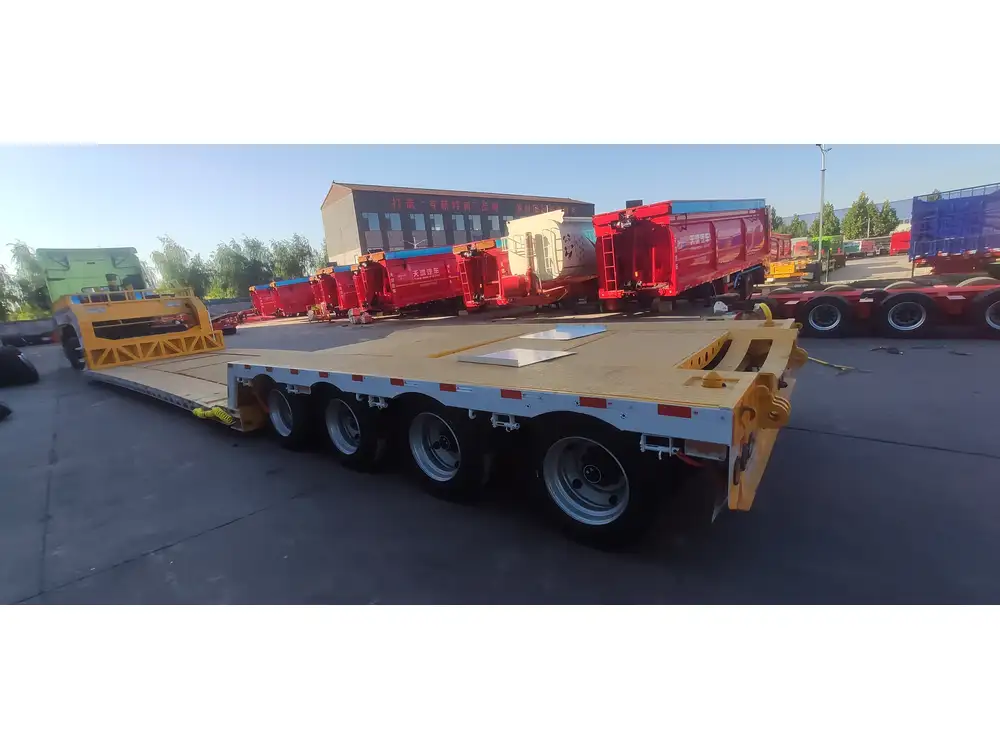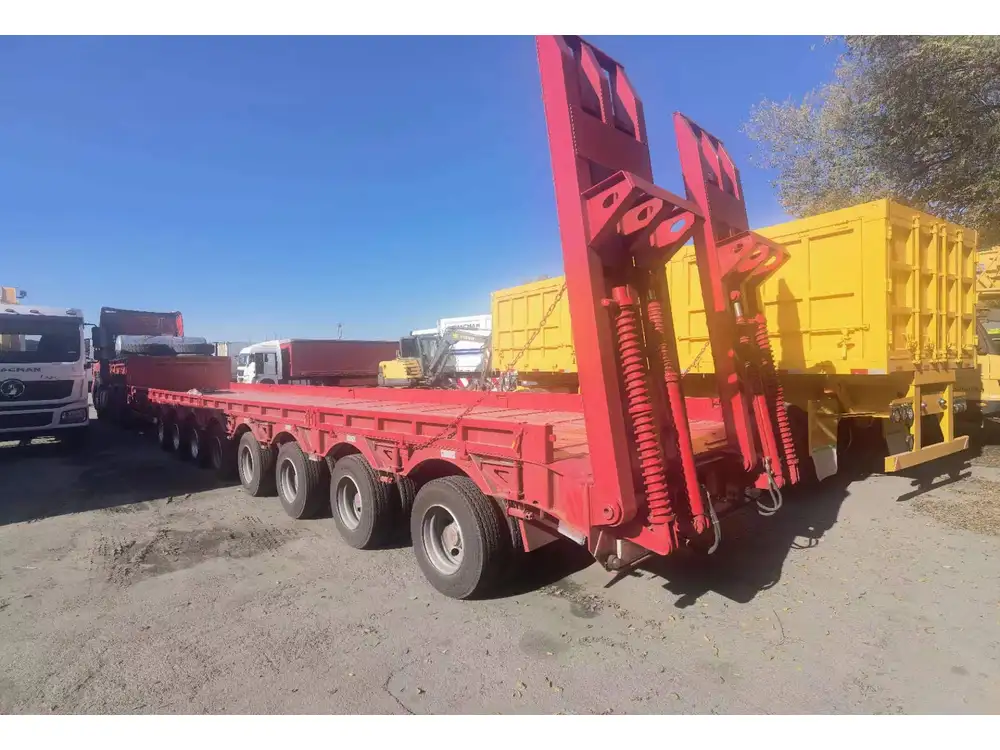Scrapping a semi-trailer can sound daunting at first, but it is often a process that many operators face at some point, whether due to age, damage, or simply the desire to upgrade. Understanding how to scrap a semi-trailer correctly can be beneficial, ensuring that all materials are disposed of properly, potential profits from scrap value are maximized, and environmental considerations are addressed. This guide walks you through the essential steps, considerations, and methods for successfully scrapping a semi-trailer.
Table of Contents
- Understanding the Value of Your Semi-Trailer
- Assessing the Condition of Your Semi-Trailer
- Legal Requirements and Regulations
- Preparing Your Semi-Trailer for Scrapping
- Finding the Right Scrap Yard
- Scrapping Process: Step-by-Step
- Recycling vs. Scrapping: What’s the Difference?
- Environmental Impact of Scrapping Trailers
- Conclusion: Maximizing Your Scrap Trailer Value
Understanding the Value of Your Semi-Trailer
When you consider scrapping a semi-trailer, the first thing to evaluate is its value. Trailers have various components that might be valuable to scrap yards, including:
| Component | Potential Value |
|---|---|
| Frame | High – Steel is valuable |
| Axles | Moderate to High |
| Tires | Moderate |
| Electrical Wiring | Low to Moderate |
| Aluminum Parts (if any) | High – Aluminum fetches good prices |
Key Takeaway: The better the condition of these components, the higher the potential return when scrapping.

Assessing the Condition of Your Semi-Trailer
It’s crucial to assess your semi-trailer thoroughly before scrapping. This step not only determines if scrapping is the best option but also helps identify potentially reusable parts. Consider the following factors:
- Structural Integrity: Check for rust, damage, or critical wear.
- Mechanical Parts: Evaluate axles, brakes, and tires for wear and tear.
- Components’ Market Value: Research prices for second-hand parts in your area.
Conduct a meticulous inspection and document the conditions of all critical components. Photographic evidence can be helpful in negotiations with scrap yards.
Legal Requirements and Regulations
Before proceeding with scrapping, it is essential to comply with local laws and regulations. Here are some things to consider:
- Title Transfer: Always ensure you have the title to the semi-trailer and that it can be transferred appropriately.
- State Regulations: Check if there are any specific state regulations regarding vehicle disposal and recycling.
- Hazardous Materials: Be aware of regulations related to disposing of hazardous materials such as brake fluid or oil.
Consult local regulatory bodies or online resources for accurate, up-to-date information on legislation affecting vehicle scrapping.
Preparing Your Semi-Trailer for Scrapping
Preparing your semi-trailer correctly can enhance both the ease of scrapping and the value you receive. Follow these steps for optimal preparation:
Remove Personal Belongings: Clear out any personal or valuable items from within the trailer.
Drain Fluids: Ensure that all fluids like fuel, oil, and brake fluid are drained safely to avoid environmental hazards.
Dismantle Usable Parts: If you’re knowledgeable, consider removing and selling parts that might be useful to others, such as:
- Tires
- Lights
- E-trailer systems
Document Everything: Keep records of the items removed and their conditions.

Finding the Right Scrap Yard
Choosing the right scrap yard can significantly affect your experience and financial return when scrapping a semi-trailer. Consider these tips:
- Research Local Yards: Look for yards specializing in automotive or trailers.
- Get Multiple Quotes: Don’t settle for the first offer. Obtain quotes from several scrap yards to determine the best value.
- Check Reviews: Online reviews and testimonials can give insights into the yard’s reputation for fair treatment and pricing.
- Visit in Person: If possible, visiting the yard can provide a sense of how they operate and allow for more accurate appraisals.
Ideal Questions to Ask Scrap Yards:
- What are your rates per ton?
- Do you offer pick-up services?
- Are there any fees for specific types of materials?
Scrapping Process: Step-by-Step
Understanding the scrapping process can demystify the experience and ensure that you are adequately prepared. The steps typically include:
- Initial Appraisal: The scrap yard will provide an initial assessment based on the weight and condition of the trailer.
- Agreement: Once a valuation is agreed upon, finalize the paperwork.
- Transporting the Trailer: Decide whether to transport the trailer yourself or utilize the scrap yard’s services.
- Final Inspection: Upon arrival, the yard will conduct a final inspection before weighing the trailer for pricing.
- Payment: Upon completion of the inspection and weight assessment, you will receive your payment, typically in cash or a bank transfer.
Table of Scrap Process Steps:
| Step | Description |
|---|---|
| Initial Appraisal | Evaluation by scrap yard |
| Agreement | Negotiation of price and terms |
| Transporting the Trailer | Delivery of the trailer to the scrap yard |
| Final Inspection | Weight and condition assessment at the yard |
| Payment | Cash or bank transfer upon completion |
Recycling vs. Scrapping: What’s the Difference?
While the terms recycling and scrapping are often used interchangeably, there are distinctions worth noting:
Scrapping: This refers specifically to the process of dismantling a vehicle or equipment, often with the aim of extracting useful materials or components. It may involve selling parts individually.
Recycling: A broader term, recycling encompasses the process of converting waste materials into new products, which can include metals, plastics, and other materials derived from scrapped trailers.
Many scrap yards also focus on recycling, ensuring that as many materials as possible are repurposed.

Environmental Impact of Scrapping Trailers
The environmental consequences of improper disposal can be dire. Proper scrapping mitigates these issues by promoting recycling and adhering to regulations regarding hazardous materials. Here are some considerations:
- Material Recovery: Effective scrapping enables the recovery of metals, plastics, and rubber, which can significantly reduce the environmental footprint associated with mining and manufacturing new materials.
- Hazardous Waste Management: Ensuring that hazardous materials like fluids and batteries are disposed of correctly helps prevent soil and water contamination.
Statistics on Environmental Impact:
| Environmental Benefit | Impact |
|---|---|
| Metal Recycling Saves Energy | 74% energy savings |
| Proper Fluid Disposal Prevents Contamination | Significant reduction in pollution rates |
| Increased Material Recovery | Reduces landfill waste by 75% |
Conclusion: Maximizing Your Scrap Trailer Value
In conclusion, scrapping a semi-trailer can be a lucrative endeavor if approached with careful planning and consideration. From assessing the trailer’s condition to understanding legal requirements, every step contributes to optimizing financial returns. Remember to take the necessary precautions regarding hazardous materials and ensure compliance with local regulations.
By following this comprehensive guide, we empower you to navigate the scrapping process effectively, ensuring a smooth transition. A well-executed scrap should not only free up resources but also promote sustainability through responsible recycling practices.



